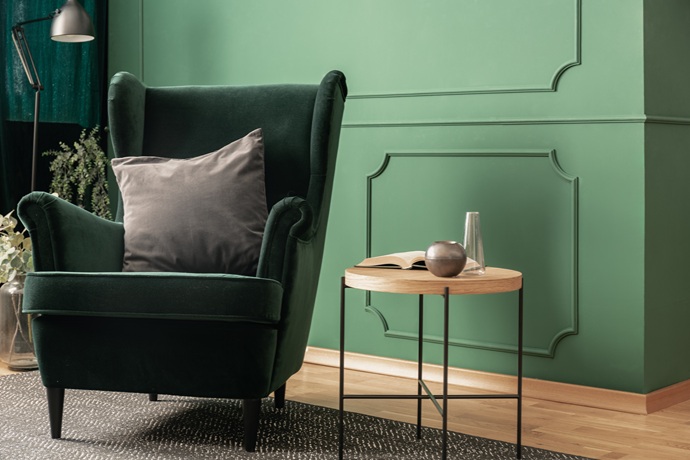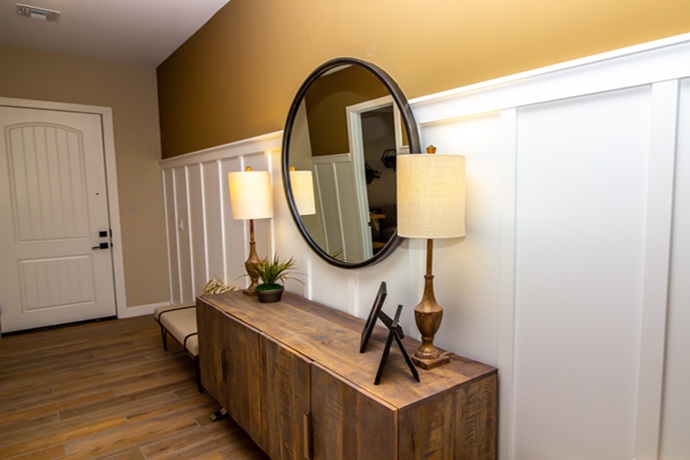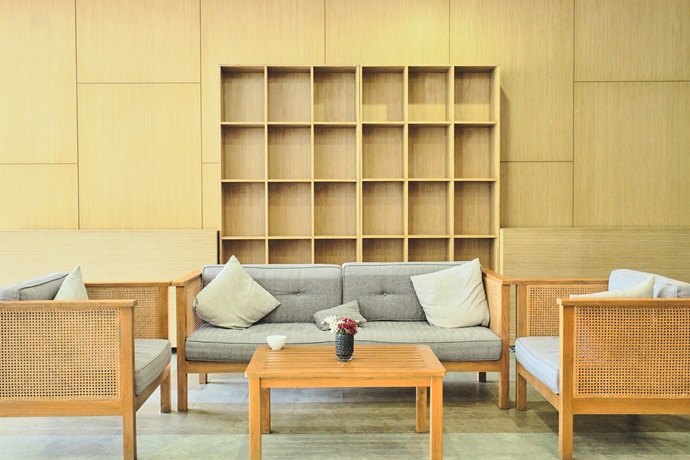October 08, 2025
When you walk into a room that feels truly timeless, chances are the millwork has a lot to do with it. Trim, paneling, built-ins, and ceiling details create a sense of permanence that wallpaper or a sofa simply can’t match.
Millwork is part of the architecture, which means the choices you make today will shape how the space feels for decades to come. That’s why it pays to understand which millwork styles stand the test of time and how to integrate them in a way that feels fresh now and lasting well into the future.
Why Timeless Millwork Matters

Millwork frames a room, creates rhythm, and ties together details that might otherwise feel separate. Unlike a piece of furniture that can be replaced when it wears out or falls out of style, millwork is a long-term investment. Done well, it adds value to a property. Timeless millwork shows care, craftsmanship, and thoughtful design.
Lasting Value in Residential and Commercial Spaces
Nothing adds warmth and depth to a room quite like classic millwork. Think about the way wainscoting elevates a dining room or how a coffered ceiling gives a living room quiet elegance.
In commercial settings, it tells clients and visitors that quality matters. A bank lobby with rich paneling or a restaurant with carefully detailed built-ins instantly communicates credibility. That lasting impression is exactly why timeless millwork holds its value.
Classic Millwork Details
Which millwork elements never seem to go out of fashion? There are a few details that designers and craftsmen return to again and again because they create balance, proportion, and beauty in any space.
Wainscoting, Coffered Ceilings, and Built-Ins
Wainscoting has been used for centuries. Originally intended to protect walls, today it also brings visual structure and sophistication. Coffered ceilings, with their grid of recessed panels, add depth and a sense of scale to rooms both large and small.
Whether it’s a bookcase flanking a fireplace, a mudroom bench with storage, or a dining room sideboard, built-ins create function while looking like they belong to the architecture. These are the details that make a home feel custom, not cookie-cutter.
Material and Finish Choices
Of course, design is only part of the equation. The materials and finishes you choose are equally important if you want a look that lasts.
Wood Species and Neutral Color Palettes
Certain woods have proven themselves over time. Oak, walnut, and cherry remain favorites because they are durable and versatile. Each has its own character, from the rich grain of oak to the warmth of cherry.
As for finishes, neutrals almost always stand the test of time. Natural stains that show the beauty of the wood, soft whites, and muted grays form a palette that can shift gracefully as furniture and décor trends come and go. The goal is to create a backdrop that adapts, not one that locks you into a fleeting style.
Blending Tradition with Modern Design

A timeless space doesn’t have to look traditional. The trick is knowing how to combine classic millwork details with modern sensibilities.
Transitional Styles That Age Gracefully
Transitional design is exactly that: a bridge between traditional craftsmanship and modern simplicity. Imagine clean-lined built-ins that still feature solid wood and subtle molding, or a coffered ceiling with slimmer profiles that feels lighter and more contemporary. These choices avoid extremes, which means they won’t feel dated when tastes inevitably shift. They age gracefully because they focus on balance, proportion, and craftsmanship rather than trend-driven flourishes.
Tips for Creating a Future-Proof Interior
When you’re making decisions about millwork, it helps to step back and think about the long view. What will feel classic ten or twenty years from now?
Selecting Designs That Endure Trends
Here are a few guiding principles:
-
Keep proportions balanced. Oversized moldings or extremely thin trim can feel fashionable now, but may look odd later. Proportion is what makes millwork feel harmonious.
-
Use detail with intention. Too much ornament can overwhelm a space, but subtle details like a well-placed bead or panel line add richness without feeling busy.
-
Focus on craftsmanship. Perfect joinery, clean seams, and careful installation always look timeless because quality never goes out of style.
-
Let the architecture lead. Millwork should support the character of the space, not fight it. A modern loft calls for simpler profiles, while a traditional home might suit more classic moldings.
-
Think about flexibility. Millwork that creates a neutral, elegant backdrop allows you to refresh furniture, lighting, or color schemes without redoing the architecture.
Why Timeless Design Still Feels Current

It’s worth pointing out that timeless doesn’t mean boring. The best interiors combine the comfort of familiarity with small touches that feel current. That could be a modern stain on a traditional species of wood or pairing classic built-ins with contemporary hardware.
At Joseph A. Interiors, this philosophy guides every project we take on. We know that millwork is more than a finishing detail. We create interiors that feel as fresh today as they will decades from now. That’s the true mark of timeless design.
Custom millwork is already a statement of craftsmanship. When paired with thoughtful lighting, it becomes immersive, functional, and emotionally resonant. If you’re planning a luxury renovation, boutique retail space, or simply want to elevate your interiors with detail-driven design, we’d love to talk. Let’s bring your vision to life!



